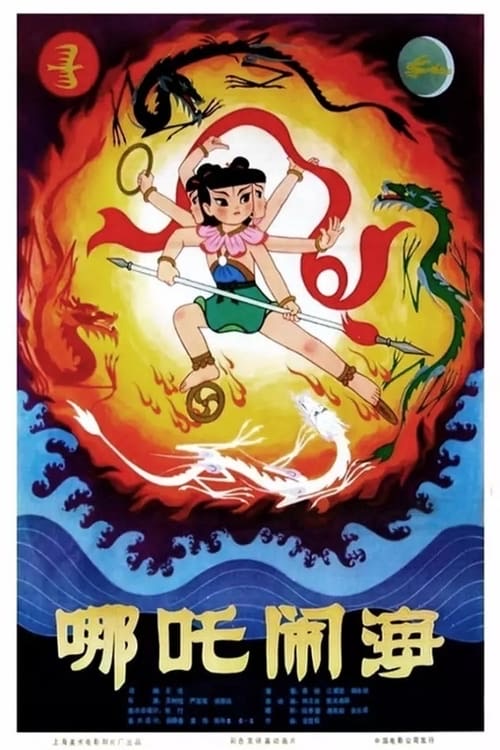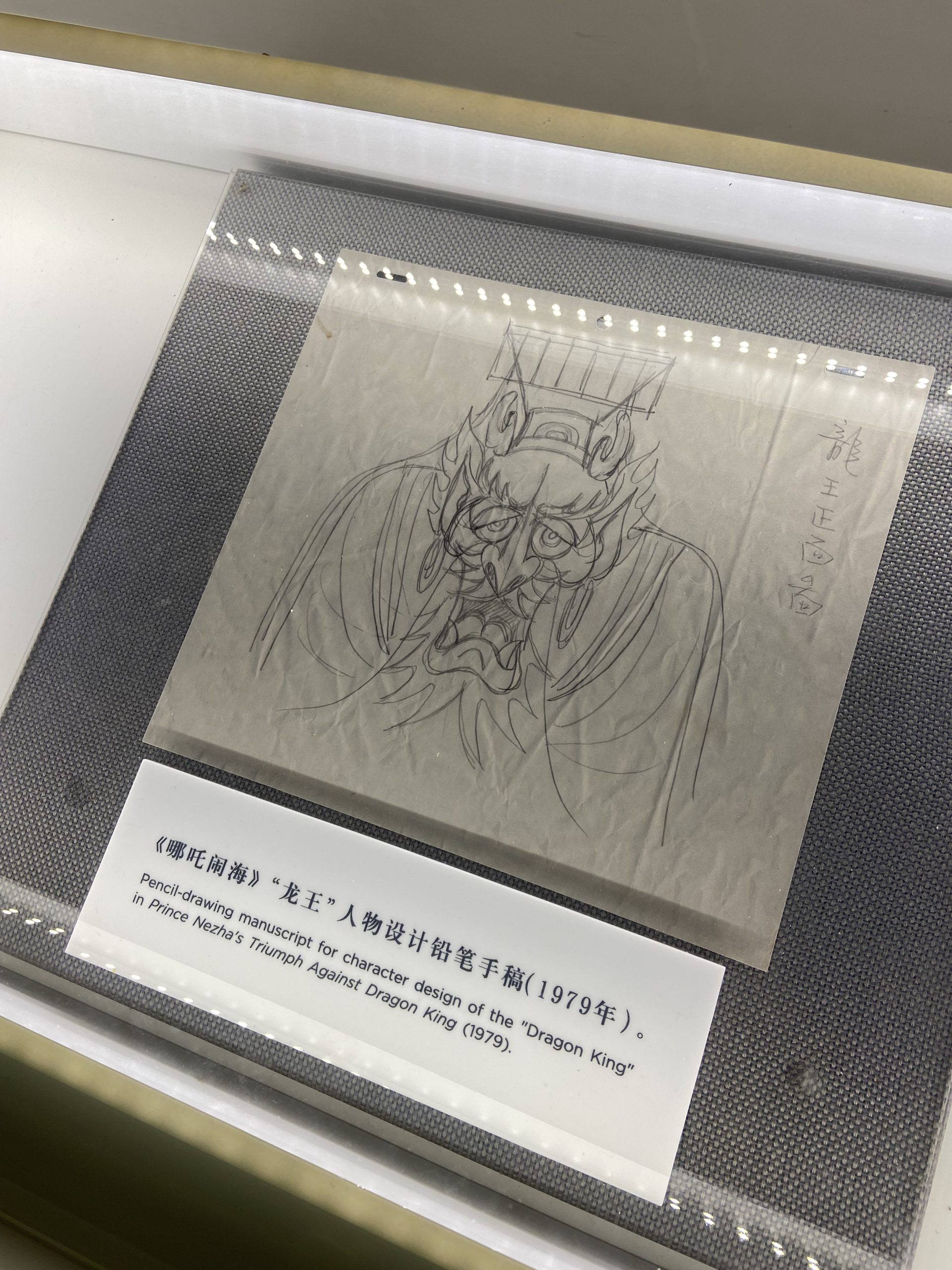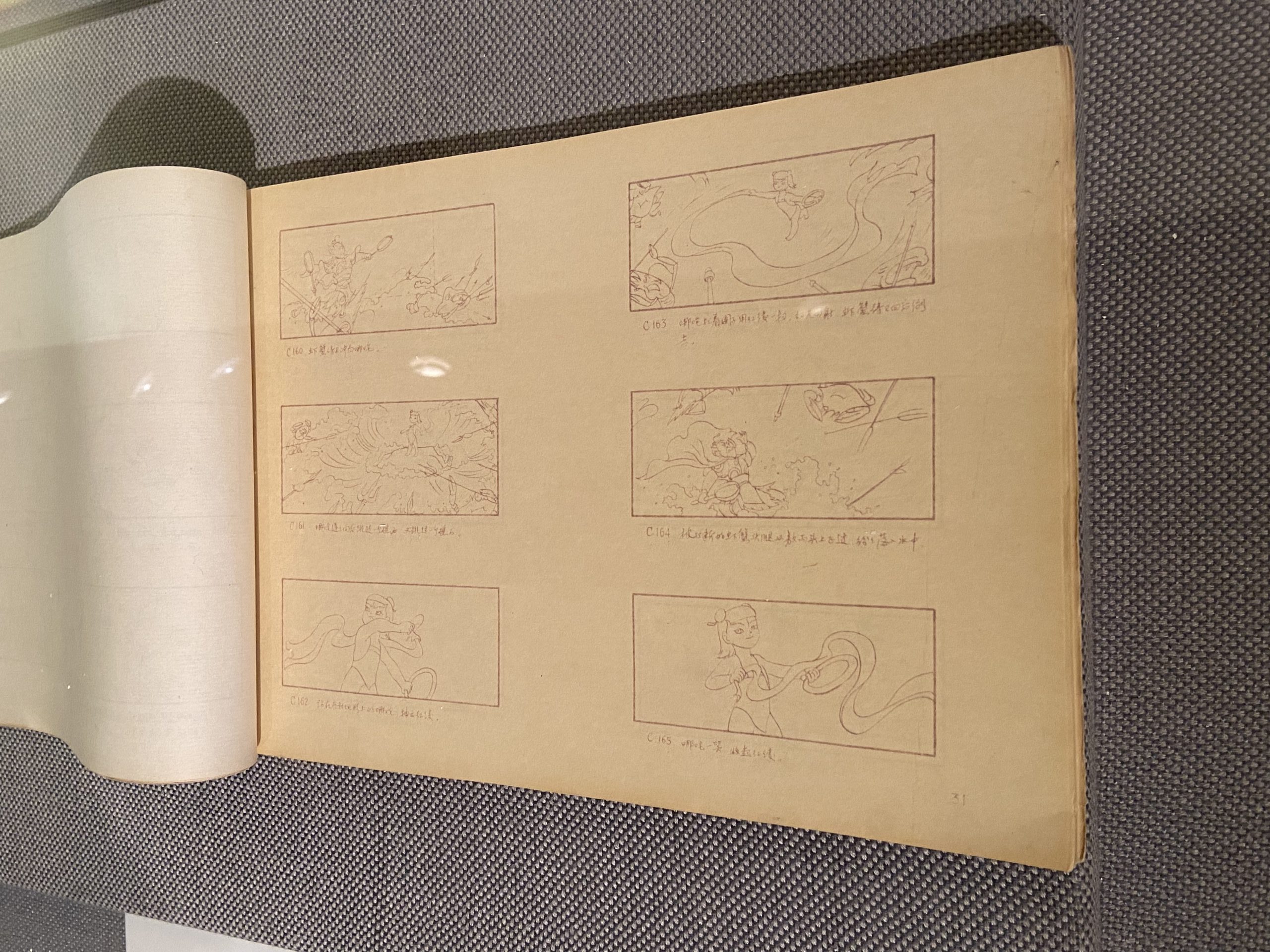Nezha Conquers the Dragon Kings (哪吒闹海)(1979)-Battle Scene (1979)
Filed under: Animation, 1970s, China, Color, Shanghai Animation Film Studio, Technicolor,
Nezha Conquers the Dragon Kings (哪吒闹海)(1979)-Battle Scene

Poster of Nezha Conquers the Dragon King
Directed by:Wang Shuchen (王树忱)
Yan Dingxian (严定宪)
Xu Jingda (徐景达)
Liu Jiamei (刘佳美)
Animated by:Zhang Ding (general art design 张仃)
Lin Wenxiao (林文肖)
Chang Guangxi (常光希)
Zhu Kanglin (朱康林)
Ma Kexuan (马克宣)
Zhang Jingyuan (张澋沅)
Pu Jiaxiang (浦家祥)
Lu Qing (陆青)
Chen Guangming (陈光明)
Fan Madi (范马迪)
Pan Jiyao (潘积耀)
Du Chunfu (杜春甫)
Fan Benxin (范本新)
Zhuang Minjin (庄欢瑾)
Jiang Caifan (蒋采凡)
Yang Suying (杨素英)
Jin Fuzai (Composer 金复载)
Wang Yongji (Orchestra Conductor 王永吉)
Shanghai Film Orchestra (上海电影乐团, Instrument Performance)
Duan Xiaoxuan (段孝萱)
Jiang Youyi (蒋友毅)
Jin Zhicheng (金志成)
Gao Yang (高阳)
Jiang Aijian (江爱坚)
Hu Yongkai (胡永凯)
Shanghai Animation Film Studio (上海美术电影制片厂)
Release date:19/05/1979
Running time:65 min (full), 4 min (selected segment shown here)
Color process:Technicolor

Pencil-drawing manuscript for character design of the Dragon King in Nezha Conquers the Dragon King (1979), Shanghai Film Museum.

Shooting picture script of Nezha Conquers the Dragon King by the director (1979), Shanghai Film Museum.
Synopsis
Inspired by the tale of the boy-god Nezha from a sixteenth-century Chinese novel Investiture of Gods (封神演义), this animated film tells the origin story of Nezha fighting against four tyrannical dragon kings, rulers of the seas who demanded human children from Nezha’s town as annual sacrifice. After Nezha killed the son of one of the dragon kings, who had attempted to harm Nezha’s friend, the dragon kings demanded Nezha’s death in exchange for the safety of the town from a flood. Nezha commits suicide to cease the conflict but is later resurrected by his sifu, an immortal master who taught Nezha martial arts. The film concludes with Nezha bringing justice to the community after storming the sea and taking his revenge on the dragon kings.
The clip shown above shows the climax of the story when Nezha battles with the four dragons.
Reception:
Nezha was the second feature-length animation film produced by Shanghai Animation Film Studio (SAFS) and the first animation employing widescreen in China in 1979. In order to accommodate theatres of both widescreen and narrow format, the studio made two versions, one for each screening ratio (Yan, 60).
Script development first started in 1958 for a co-production between China and Soviet Union. However, the script was put on hold because scriptwriters on both sides could not agree on whether to retain “superstitious” content, especially Nezha’s resurrection (Sun, 23). Deterioration of Sino-Soviet relation by the end of the 1950s made the co-production impossible (王, 73).
The prohibition of mythological subjects and possible celebration of traditional culture during the Cultural Revolution (1966-1976) was another factor that contributed to Nezha’s delayed production and release.
The Cultural Revolution concluded with the arrest of its leaders, the Gang of Four (四人帮). Members of SAFS were hence able to return to animation making of previously banned subjects. Wang Shuchen, who is the co-director and scriptwriter of Nezha, explicitly stated that without the fall of the Gang of Four, Chinese animation will not return (Wang, 33-35). The story of Nezha coincides with the fall and revival of Chinese animation industry during and after the Revolution (Wang, 33-35). Macdonald speculated that the allegorical connection between the Gang of Four and the four dragon kings was part of the script finalization (Macdonald, 210).
Nezha has a populist narrative typical to early Deng Xiaoping’s era (1978-1979). Wang Shuchen removed the overly brutal killing that Nezha committed in the original novel while justifying Nezha’s violence against the dragons with rhetoric of “protecting the people from exploitation”. His suicide thus becomes a tragic yet heroic act of self-sacrifice (Sun, 29).
Ever since its foundation in 1957, SAFS proceeded with a “nationalized” art style which is heavily inspired by traditional Chinese art. Members of SAFS visited costal regions such as Qingdao, Yantai, Penglai and Shidao to capture the movement of the sea. When designing characters, artists found inspiration from ancient print and cave paintings (of Dunhuang, western China, which was along the Silk Road). Architecture from the Tang (618-907 CE) and Song Dynasty (960-1279) is also part of the project (王,75). What is intriguing is that the composer recorded music performed by bian zhong (编钟), a set of ancient bells discovered in 1978 as when the animation was made (王,75).
Nezha has received multiple awards both domestically and internationally.
In 1979, it received the Outstanding Film Award from the Ministry of Culture and the Young Excellent Creation Award.
In 1980, Nezha received a Special Screening Award at the 33rd Cannes Film Festival.
In 1983, Nezha received the Special Prize at the 2nd Manila International Film Festival in Philippines.
And finally, in 1988, Nezha received the Jury Award and the Widescreen Feature Film Award of the 7th Bourbon Cultural Club.
References:
Dingxian, Yan. “Chapter 3 An Authentic Animator”. In Chinese Animation and Socialism, (Leiden, The Netherlands: Brill, 2021)
Macdonald, Sean. “Animation as Intertextual Cinema: Nezha Naohai (Nezha Conquers the Dragon King).” Animation : An Interdisciplinary Journal, vol. 10, no. 3, 2015, pp. 205–21, https://doi.org/10.1177/1746847715605608.
Sun, Lijun, ed. The History of Chinese Animation. II. London: Routledge, 2020.
Wang Shuchen, Nezha naohai de juben gaibian he yinmu tixian (The Script and Film Representation of Nezha Conquers the Dragon King), Dianying tongxun, No.4 (1979) 33-35
王,静. “哪吒闹海,天书奇谈,三个和尚交给未来的一份圆满答卷.” 国家人文历史(北京),November 1, 2022. 72-81
External Links:
See full version of Nezha Conquers the Dragon King with English subtitles here: https://archive.org/details/nezha-conquers-the-dragon-king
